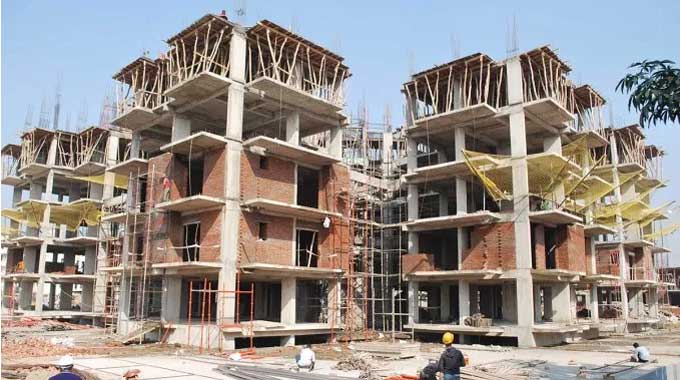
Stages in Construction of a Residential Building

A residential building is a building in which there are more than half of the building floor area are for dwelling purposes. These types of building has one or more rooms used for housing and has basic facilities and utilities that will satisfy a person or family living at the residential building premise.
In the construction of a residential building, some paperwork is needed before the actual start of the construction. The steps in getting started with the paperwork are;
1. To prepare the construction drawings as per the requirements of the consumer.
2. To fix an estimate beforehand for labour cost, material cost, sanction cost etc.
3. To get the approval of the drawings, diagrams and estimates from the client.
4. To get the approval of the drawings and diagrams from the City Development Authority. It is very important because without their permission and approval no authorized work could start. The residential building's drawings should meet the authorized defined rules.
5. Then the construction work should be stated either through labour hired on daily basis or through a contractor.
6. Making of planned plot boundaries.
7. Cleaning of the plot to be used for the construction of the building.
8. Preparation of the site layout by following it as per the drawings.
After the fulfilment of all the documentation work, the actual work for the construction will begin.
The steps are as follows:
Earth Work
Earthwork is an engineering process of work created through the moving and processing of immense quantities of soil and earth-bound rock. For a residential building to be made general excavation is carried out for the construction of the wall foundations.
Excavation must be carried out by following the drawings and maintaining the defined lengths and widths. Once the excavation is finished, lay out the foundation and backfill the unfinished excavated area throughout the foundation with soil.
Concrete work in the foundation
It is very crucial to check the levels of the foundation before starting the concrete work. The first thing in this process is to level the foundation base to the same level, and then pour the concrete as the prepared drawing specs.
Damp Proof Course (D.P.C)
Damp proofing is a barrier used throughout the structure designed to prevent moisture and moisture from the building. It is used to prevent walls so a layer of damp proof coarse material is laid towards the floor level.
Masonry Work
Masonry work is used to indicate the parts of the building to be made with either stones or bricks. Masonry work is followed through with cement mortar. The cement mortar is a concoction of cement and sand.
Here 1 part cement and 6 parts of sand are used. The bricks are then dampened and cleaned away with a hosepipe and then moisten for about a meter. The bricks are then laid down horizontally in levelled line on the mortar bed.
Roofing
The roof slab of the building has pored after the completion of the masonry works. Then after a few days, the roofing is reinforced with a cement concrete slab.
Plastering and Pointing
After the masonry and roofing, the plasterwork begins. Overall the internal walls of the buildings are covered with plaster while the outer walls are covered with pointing.
To learn more, watch the following video tutorial.
Video Source: Civil Engineering Pedia
Doors and Windows
Doors and windows are installed. Doors and windows can be of wood, steel or aluminium. For wooden doors and windows, frames are fixed in walls during the time of masonry and steel and aluminium doors are fixed after the finishing of the paintwork.
Services
Services are very important for every household. Various kinds of services are provided during the final construction. These services include Electric supply, gas supply, water supply, sanitary supply etc.


